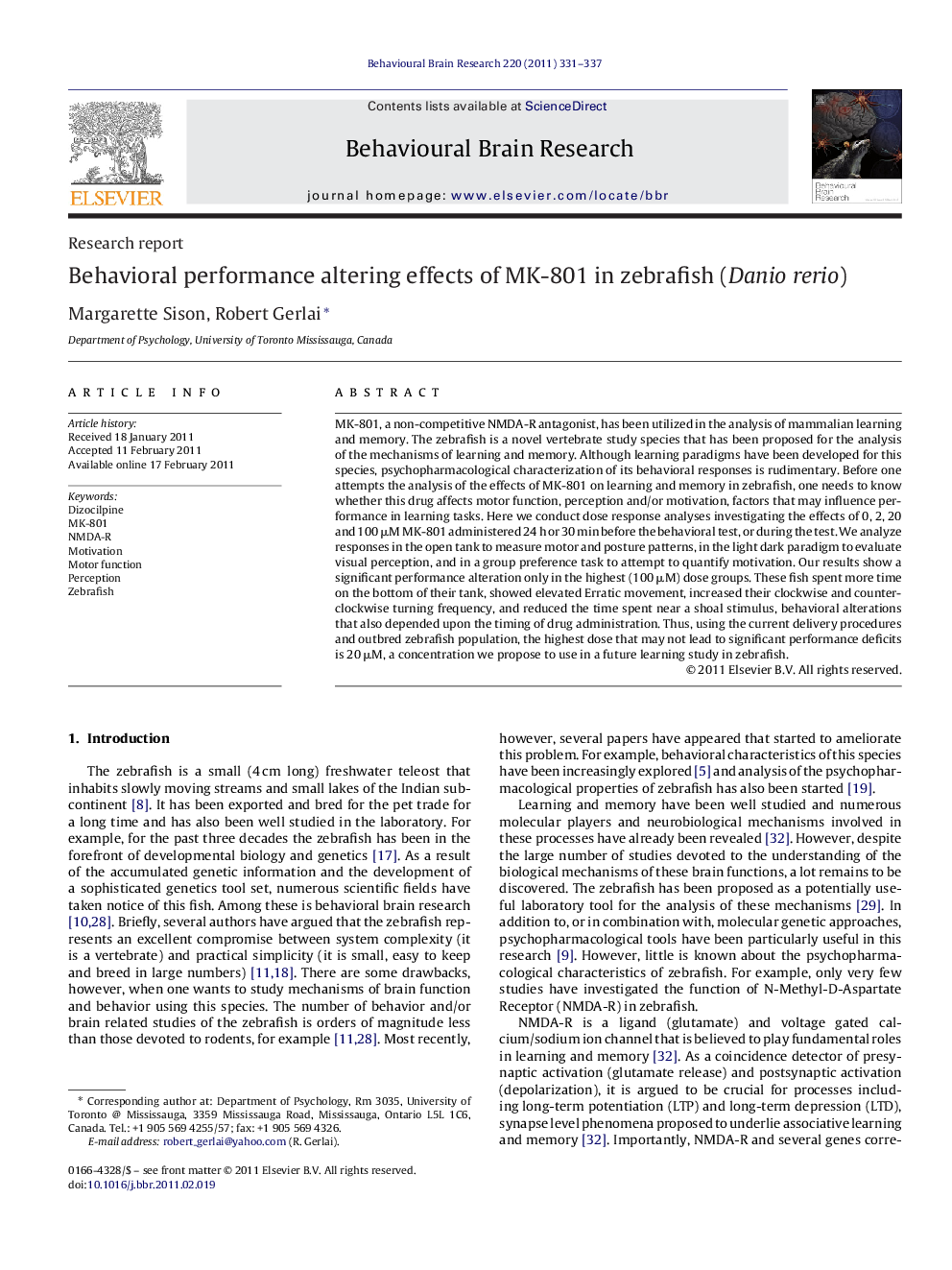| Article ID | Journal | Published Year | Pages | File Type |
|---|---|---|---|---|
| 4313756 | Behavioural Brain Research | 2011 | 7 Pages |
MK-801, a non-competitive NMDA-R antagonist, has been utilized in the analysis of mammalian learning and memory. The zebrafish is a novel vertebrate study species that has been proposed for the analysis of the mechanisms of learning and memory. Although learning paradigms have been developed for this species, psychopharmacological characterization of its behavioral responses is rudimentary. Before one attempts the analysis of the effects of MK-801 on learning and memory in zebrafish, one needs to know whether this drug affects motor function, perception and/or motivation, factors that may influence performance in learning tasks. Here we conduct dose response analyses investigating the effects of 0, 2, 20 and 100 μM MK-801 administered 24 h or 30 min before the behavioral test, or during the test. We analyze responses in the open tank to measure motor and posture patterns, in the light dark paradigm to evaluate visual perception, and in a group preference task to attempt to quantify motivation. Our results show a significant performance alteration only in the highest (100 μM) dose groups. These fish spent more time on the bottom of their tank, showed elevated Erratic movement, increased their clockwise and counterclockwise turning frequency, and reduced the time spent near a shoal stimulus, behavioral alterations that also depended upon the timing of drug administration. Thus, using the current delivery procedures and outbred zebrafish population, the highest dose that may not lead to significant performance deficits is 20 μM, a concentration we propose to use in a future learning study in zebrafish.
Research highlights► The behavioral effects of four concentrations of MK-801 (0, 2, 20, and 100 μM) are characterized. ► The drug is administered 24 h before, or 30 min before or during the tests. ► A comprehensive test battery analyzing motor function, visual perception and shoaling motivation is employed. ► Only the highest concentration (100 μM) of MK-801 is found to alter performance and thus the intermediate concentration (20 μM) is proposed for the future analysis of learning and memory.
